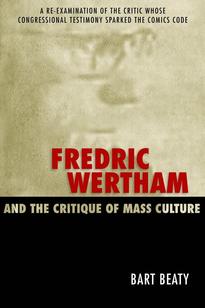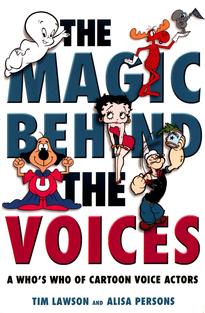Comics Studies
Carl Barks and the Disney Comic Book
For over twenty-five years, Disney artist Carl Barks (1901-2000) created some of the most brilliant and funny stories in comic books. Gifted and prolific, he was the author of over five hundred tales ...
Walt Disney
The imagination of Walt Disney (1901-1966) is still seen in theme parks throughout the world bearing his name, on numerous live-action films and television specials, on toys and assorted merchandise, ...
Fredric Wertham and the Critique of Mass Culture
Too often remembered solely as the psychiatrist and cultural critic whose testimony in Senate subcommittees sparked the creation of the Comics Code, Fredric Wertham was a far more complex man. Author ...
Alternative Comics
In the 1980s, a sea change occurred in comics. Fueled by Art Spiegel- man and Françoise Mouly's avant-garde anthology Raw and the launch of the Love & Rockets series by Gilbert, Jaime, and Mario Hernandez, ...
Living Life inside the Lines
Martha Sigall worked with all the classic cartoon characters—Bugs Bunny, Daffy Duck, Tom & Jerry, Droopy Dawg, Beany & Cecil, Tweety, and Porky Pig—and the madcap artists who created them—Chuck ...
Chuck Jones
Chuck Jones: Conversations brings to life the legendary Warner Bros. artist who helped shape the history of American animation, defining our impressions of such characters as Bugs Bunny, Daffy Duck, Road ...
Arguing Comics
When Art Spiegelman's Maus—a two-part graphic novel about the Holocaust—won a Pulitzer Prize in 1992, comics scholarship grew increasingly popular and notable. The rise of “serious” comics has ...
Mort Walker
When Mort Walker (1923–2018) was ten years old, he received an inscribed Moon Mullins cartoon from its creator Frank Willard that read, “Say Morton, those drawings you sent me were swell—I'll bet ...
The Magic Behind the Voices
The Magic Behind the Voices is a fascinating package of biographies, anecdotes, credit listings, and photographs of the actors who have created the unmistakable voices for some of the most popular and ...
R. Crumb
R. Crumb's illustrations have appeared on the covers of albums by Big Brother and the Holding Company, on bootlegged T-shirts, and in several underground newspapers. He is, however, first and foremost, ...









